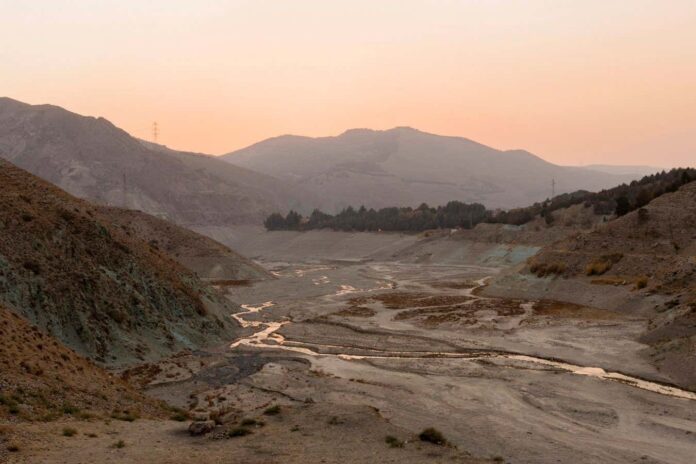Iran is facing a catastrophic drought, prompting the government to launch an ambitious cloud-seeding operation in a bid to avert a potential evacuation of the capital, Tehran. While the initiative represents a drastic measure, experts caution that its effectiveness is limited, and the underlying causes of the crisis run far deeper than atmospheric manipulation.
The Severity of the Drought
Rainfall across Iran is currently 85% below average, with Tehran receiving a mere 1 millimeter of precipitation this year. Reservoirs are critically low, with water capacity at just 5% in 32 major dams, some of which have already dried up entirely. The situation has led to reduced water pressure, planned fines for excessive consumption, and the looming threat of mass evacuation if rainfall doesn’t improve by December.
Root Causes: Climate Crisis and Mismanagement
While the global climate crisis undoubtedly exacerbates the drought, poor water management is the primary driver of Iran’s “water bankruptcy.” The government has expanded agriculture into arid regions, depleting resources, and half a million illegal wells, drilled by desperate farmers, are draining groundwater reserves. This unsustainable practice, coupled with climate change, has created a perfect storm.
What is Cloud Seeding?
Developed in the 1940s, cloud seeding involves dispersing particles – typically silver iodide – into clouds to encourage precipitation. These particles act as condensation nuclei, promoting the formation of ice crystals that eventually fall as rain or snow. While some studies suggest a 5-15% increase in precipitation under optimal conditions, proving direct causality remains challenging due to natural weather variability.
Iran’s Cloud Seeding Campaign
Iran recently initiated its own cloud-seeding program, deploying seeding agents from cargo planes, drones, and “ground generators” (smoke furnaces). Initial reports suggest localized rainfall increases in some areas, including around the rapidly drying Lake Urmia. However, replenishing major reservoirs requires clouds with substantial moisture content, a scarce commodity in Iran’s arid climate.
Limitations and Realities
Experts emphasize that cloud seeding is unlikely to solve the drought. Karen Howard, a scientist at the US Government Accountability Office, points out that the technique is far more difficult during droughts due to atmospheric dryness. Even with seeding, clouds may not contain enough moisture to generate significant precipitation.
A Marginal Benefit
Armin Sorooshian at the University of Arizona suggests that cloud seeding can “squeeze out a few more drops” from existing weather systems, but it won’t lead to extreme rainfall or widespread drought relief. Recent masses of rain clouds blown in from the Black Sea have even caused flooding in western Iran, suggesting that natural weather patterns play a far greater role than artificial intervention.
In conclusion, while Iran’s cloud-seeding program may offer a marginal benefit, it’s not a sustainable solution to the country’s severe drought. The crisis demands long-term water management reforms, alongside global efforts to mitigate climate change.


































